Major life decisions, such as moving to a new city, changing jobs, attending grad school, or starting or ending a relationship, can cause even confident and capable people to feel stuck or frozen.
It’s not because they’re indecisive or weak, it’s because the mind often frames the choice as life-or-death: “You must choose the perfect path, or you’ll regret it forever.” That pressure makes any option feel risky. In Acceptance and Commitment Therapy (ACT), instead of trying to argue back with the thought, we use a skill called cognitive defusion.
This post shares a quick, repeatable mindfulness exercise to loosen the grip of perfection-driven thoughts, helping you move forward with the next meaningful step, without needing to push away your nerves.
Why big decisions trigger “perfect or perish”
- High stakes + uncertainty = fusion.
Big decisions often feel overwhelming because the stakes are high and the outcome is uncertain. In those moments, our minds tend to “fuse” with scary thoughts and treat them as absolute truths. A thought like “If I pick wrong, I’ll ruin my future” doesn’t just feel like a worry, it feels like a fact. That pressure can freeze even the most capable person.
- Catastrophe and fantasy crowd out nuance.
When we’re caught up like this, the mind also loses balance. Instead of seeing a range of possibilities, it flips between two extremes: catastrophe and fantasy. On one side, doom, “This will end badly.” On the other, utopia, “This will fix everything.” Both are stories about the future, not real plans, and they keep us from thinking flexibly about what’s actually in front of us.
- More info doesn’t equal more freedom.
It’s natural to respond by searching for more information, but more research doesn’t always lead to more clarity. In fact, it can do the opposite. Endlessly reading, comparing, and weighing options can create the illusion that certainty is just one more article or video away. The problem is, certainty never arrives. The only thing that really clarifies a decision is taking one small, concrete step forward.
- Defusion
In Acceptance and Commitment Therapy (ACT), the skill that helps here is called cognitive defusion. Defusion is about seeing your thoughts as just words on a page or sentences in your head, not commands you have to obey. Instead of “I must pick the perfect path or else,” you can reframe it as “I’m noticing the thought that I must pick the perfect path or else.” That little shift loosens the thought’s grip. With space between you and the thought, you can choose based on your values, not your fear.
The 2-Minute Defuse-Then-Decide Drill
Use this when you feel yourself hunting for the “perfect” answer.
1. Name your options.
Write A, B, (C if needed). Keep it simple: “Stay,” “Switch jobs,” “Move cities.”
2. Run the Fusion Test on each option.
Write the loudest thought your mind attaches to that option. Then add the five-word buffer:
“I’m having the thought that choosing \[Option] will \[catastrophe/utopia].”
Examples:
“I’m having the thought that choosing the startup will expose me as incompetent.”
“I’m having the thought that staying put guarantees safety and respect.”
3. Read each line once, slowly.
Notice how the thoughts appear as words in your mind.
4. Sense the “static.”
Which option’s thought still crackles with the most emotional charge? Which one quiets fastest when you add the prefix? You’re not chasing calm—you’re checking how fused you are with each story.
5. Pick one tiny, testable move.
Choose the option with the least static (or the most values-aligned one if static is equal) and take a 2-minute action you can do today. Examples below.
That’s ACT-style mindfulness training in the wild: notice → defuse → move.
What a 2-Minute Action Looks Like (for common big moves)
Below are some examples that one can use in daily life situations that require readjustments. Defuse line is any thought, phrase, or mental story that pops up in a situation which you can practice “defusing” from.
New city vs. stay put
Defuse line: “I’m having the thought that moving will prove I’m reckless.”
Action: book one 15-minute call with a resident or schedule a single viewing. Not a life contract, but just m an experiment.
Job Switch
Defuse line: “I’m having a thought that switching means I’ll fall behind peers”
Action: Send one informational DM or draft a 3-bullet value pitch to yourself: impact, growth, autonomy.
Relationship decision
Defuse line: “I’m having the thought that leaving means I can’t handle hard things.”
Action: write one value you want to embody (honesty, kindness, steadiness) and plan one conversation that reflects it.
Creative leap / starting a business
Defuse line: “I’m having a thought that starting now guarantees public failure”.
Action: publish a 100-word pilot post or show one draft to one trusted person.
Note: You’re not locking your future. You’re **testing** your next inch.
Anti-paralysis rules of thumb (ACT-flavoured)
When you’re stuck in decision paralysis, ACT suggests shifting the way you relate to choices rather than trying to force certainty. These “anti-paralysis rules of thumb” are small practices to loosen the grip of perfection-demanding thoughts.
Prefer experiments over vows.
Instead of treating a decision like an irreversible life contract, treat it as a limited-scope trial. In ACT terms, this means choosing a step that aligns with your values and testing it in real life. A decision then becomes part of an unfolding path rather than a prison you’re locked into.
Time-box the research
Set a timer (e.g., 20 minutes) to gather information, then practice a “Defuse-Then-Decide” move: notice the perfection-chasing thoughts, step back from them, and take action. This prevents information-gathering from becoming avoidance.
Write your values in one line.
Values act like a compass when fear and uncertainty are loud. Jot down the ones that matter most to you, maybe learning, contribution, stability, adventure, community, and let those guide your decision. In ACT, values are chosen directions, not final destinations, and they work better than chasing “the perfect choice.”
Expect thoughts to return.
A big misconception is that clarity means the doubts go away. In reality, the mind will often whisper, “What if I’m wrong?” even after you’ve chosen. The aim isn’t to erase that thought, but to get less entangled with it over time. With defusion, the thought shows up, but it doesn’t have to stop you from moving toward what matters.
Trouble-shooting sticky moments
“Both options feel fused.”
Run a second pass using the opposite story: utopia and catastrophe for each side. Then choose the option that allows a reversible next step, and take the smallest action now.
“I keep asking friends/AI for reassurance.”
Name the urge: “I’m having the thought that one more opinion will make me safe.” Take one action before you ask anyone else.
“What if I really regret it?”
You might, and you’ll still have a skill. Regret is a feeling, not a prophecy. Defusion keeps feelings from dictating your whole map.


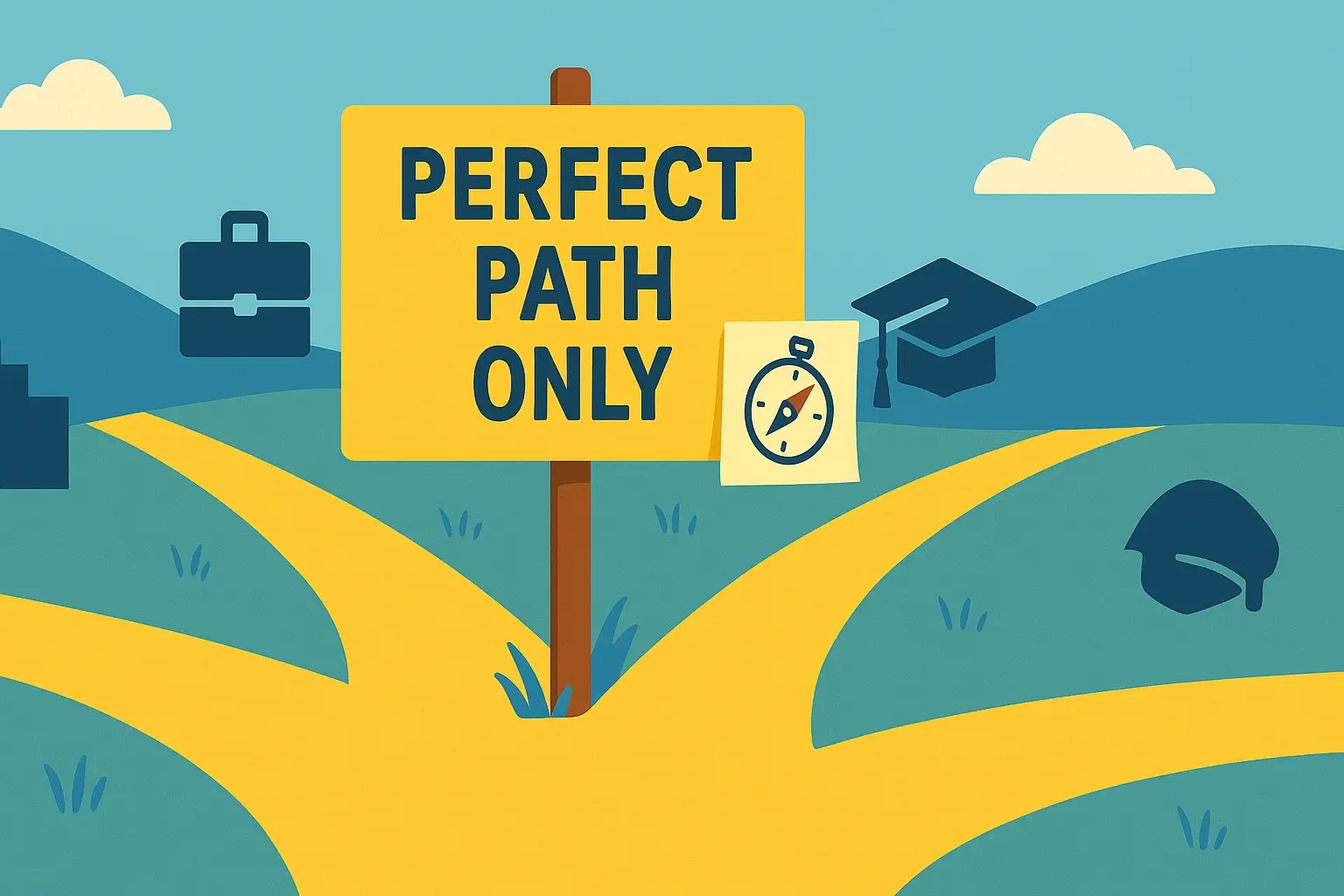
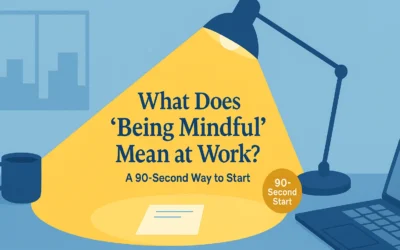
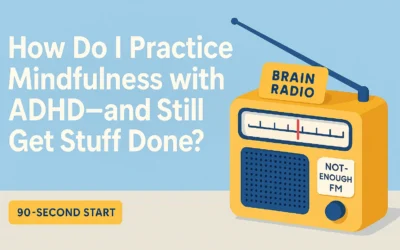
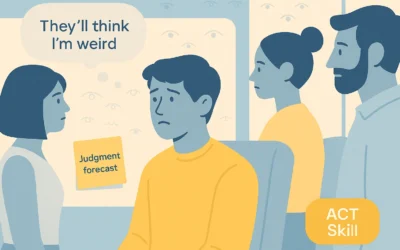
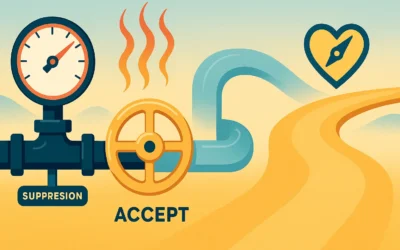
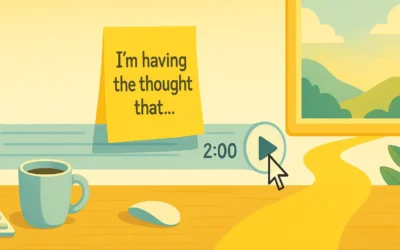
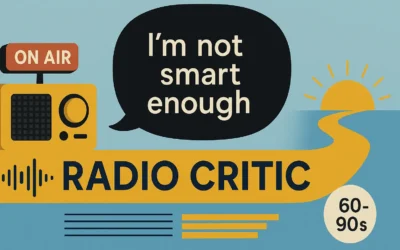
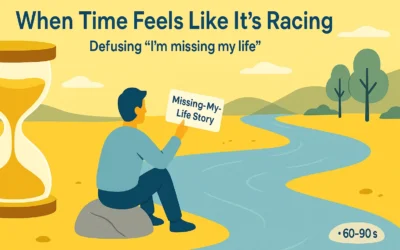
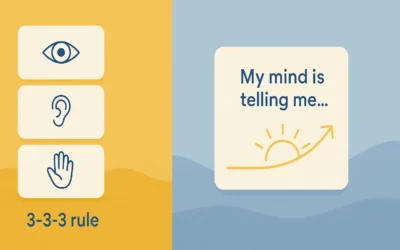
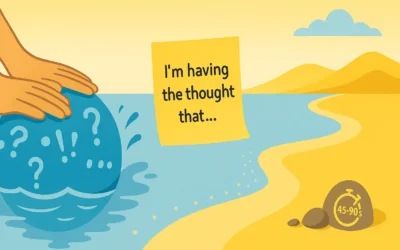
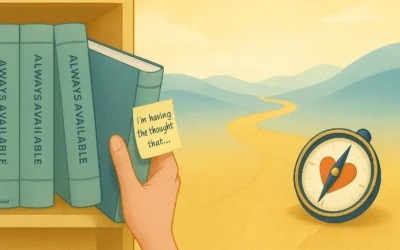
0 Comments